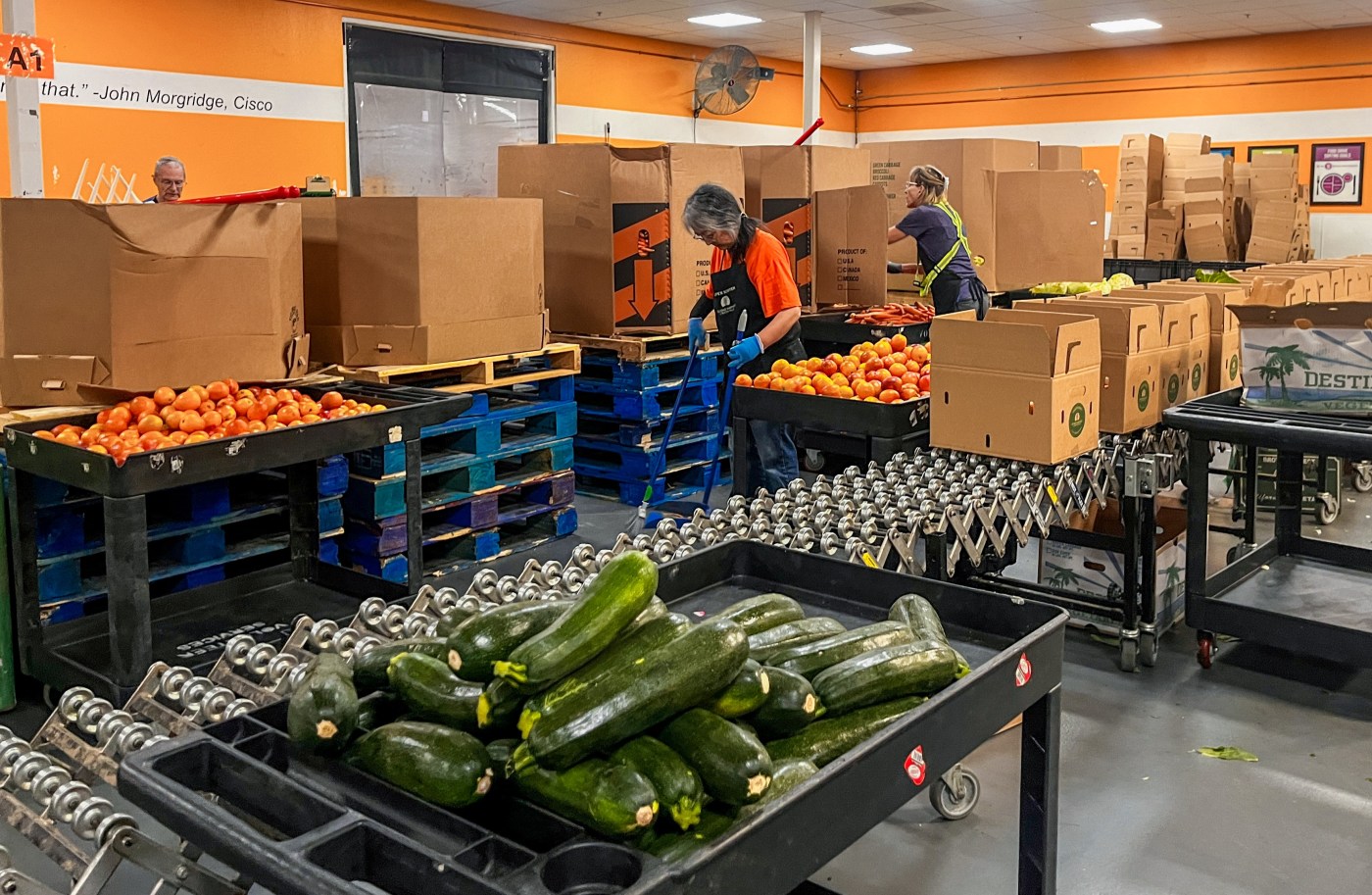
Editor’s Note: This article was written for Mosaic, an independent journalism training program for high school students who report and photograph stories under the guidance of professional journalists.
Proposed cuts to a federal program that provides food assistance to those in need have stirred worries, both among Bay Area food bank leaders and the families who depend on them to help put food on the table.
The bill that was hammered out in Congress in the past few weeks could result in hundreds of billions of dollars coming out of the Supplemental Nutrition Assistance Programs (SNAP). According to the Urban Institute, the legislation could mean 5.e million people would lose at least $25 in monthly SNAP benefits.
Diana Bacho of San Jose, a mother of three who works as a night janitor, said the program has not only helped to feed her family, it also has allowed her to meet other essential expenses, such as rent. Without her SNAP benefits, she said, she would have to get a second job.
Leaders of five of the Bay Area’s largest food banks spoke recently at Second Harvest of Silicon Valley in San Jose, where they decried proposed cuts to the SNAP. They said the drain on funds would intensify the strain on their ability to meet the needs of the people they serve.
“We cannot replace a gutted federal safety net,” said Leslie Bacho (no relation to Diana Bacho), the CEO of Second Harvest of Silicon Valley. “Lines will get longer for Second Harvest without the help of SNAP.”
Among those lengthening the lines would be the Sanchez family of Mountain View. Mrs. Sanchez (she asked that her first name not be published) said SNAP funds aid in feeding her family of seven for half the month.
Related Articles
Furry friends get royal treatment at San Jose pet party
New downtown San Jose event celebrates Latin American art, culture
San Jose’s Portuguese community celebrates its shared history, heritage
San Jose’s Alum Rock Park hit by ‘BioBlitz’
Black community pride fills San Jose Juneteenth festival
“It has helped me a lot,” she said, “especially in the pandemic.” If the funds are reduced or disappear entirely, she said, “I would go and get food from the food bank.”
When the emergency SNAP benefits that Congress provided at the height of the pandemic ended in March 2023, “we saw an instant increase in our line,” Leslie Bacho said. She expressed fear that the proposed cuts would create a demand that could not be met.
“At food banks we are very efficient and we are very committed,” she said, “but there is no food bank in the country that has enough staff, funds and food to be able to make up this gap.”
Diana Bacho said she already is a regular food bank visitor, in part because food prices have increased significantly, while the SNAP funds have stayed the same.
Second Harvest is reaching out to the people it serves, “making them aware of the cuts,” said Shobana Gubbi, chief philanthropy officer of Second Harvest. She added that the organization is making preparations now, in anticipation of the federal bill’s passage.
She said volunteers are crucial to their effort. “Many community groups come by to help,” she said, with groups from “church, sports teams, high school and middle school. All are welcome to help at their food warehouse.”
Leslie Bacho summarized the motivation that keeps those involved committed. “It’s not just about hunger,” she said. “It’s also about dignity.”
Katie Pleitez is a member of the class of 2026 at Mountain View High School.